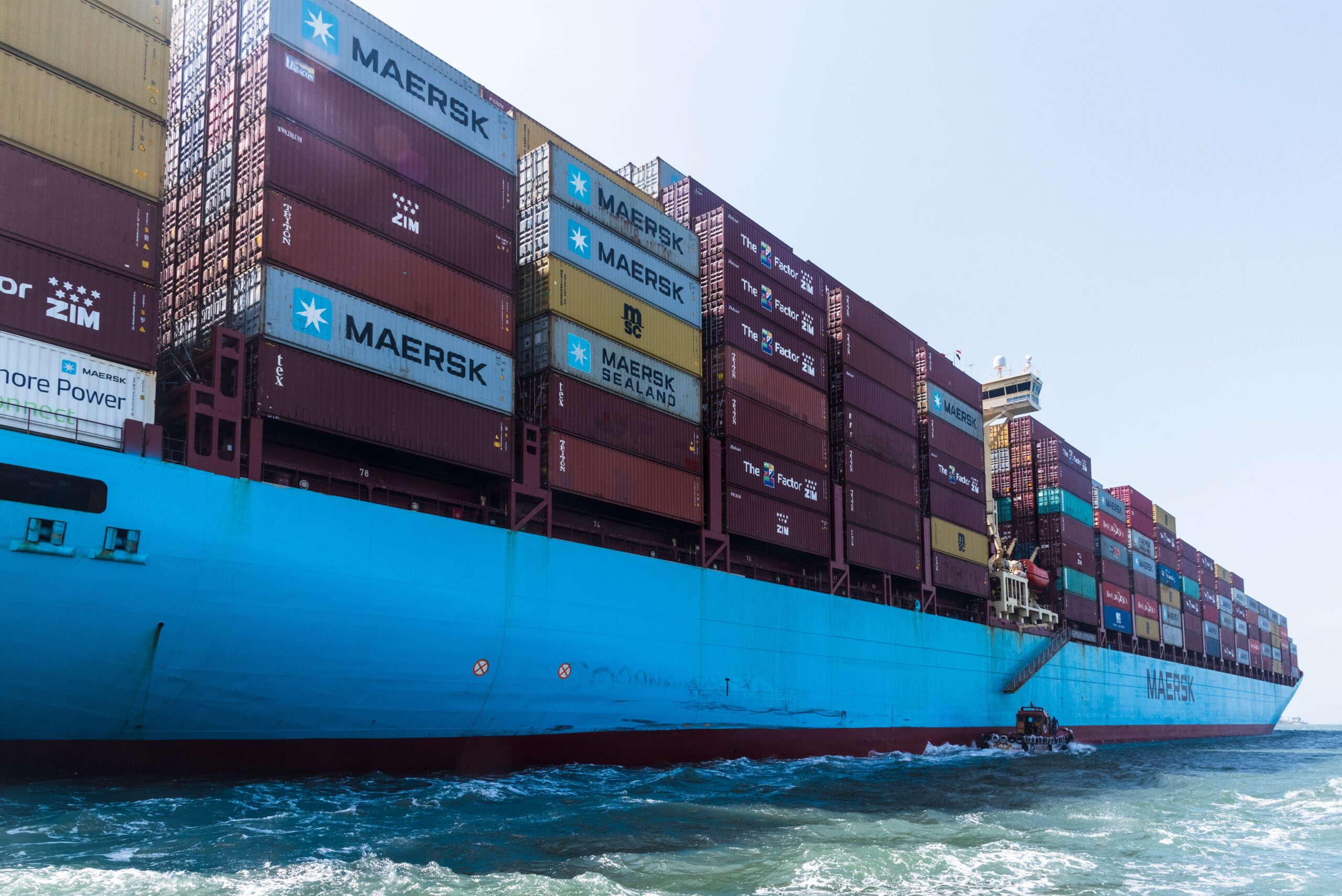Merely two weeks after the outbreak of the war between Hamas and Israel in October 2023, the Yemen-based Houthi movement entered an increasingly internationalised conflict, which had already seen Hezbollah escalate tensions along the Lebanon-Israel border[i] in addition to a number of militias attacking United States military positions in Syria, Iraq and Jordan,[ii] purportedly in response to the US’ declared support for Israel in the war against Hamas. Houthi involvement began with the firing of three land attack missiles in the Red Sea, which a US destroyer intercepted on 19th October.[iii] In the past six months since, this was followed by more than 80 attacks—some attempted to target Israel’s southern territories[iv] while the majority was indeed aimed at commercial vessels navigating the Gulf of Aden and the Red Sea towards the Suez Canal, as ACLED’s conflict observatory database has highlighted.[v] In early May, Houthi drone attacks reached a ship much farther out in the Indian Ocean[vi], risking maritime routes thought to be safe from their influence up until now.
However, beside the Houthis’ declaration of support for Palestinians certain geopolitical changes and opportunities, and, indeed, the Houthis’ own strategic aspirations also motivate their attacks. Among such opportunities, the vacuum that Somali pirates left behind in the Gulf of Aden and the Guardafui Channel, and the potential continuation of war with Saudi Arabia via economic means should be considered.
Since Egyptian President Abdel Fattah el-Sisi inaugurated the expansion to the Suez Canal in 2015[vii] transit traffic in commercial shipping has increased exponentially, accounting for 12% of global trade and up to 30% of global shipping container traffic.[viii] This substantially increased the number of merchant ships entering the Gulf of Aden and the Red Sea via the Guardafui Channel, the strait between the Horn of Africa and the Yemeni islands of Socotra and Kilmia.
Houthi attacks on international shipping lines—selectively targeting vessels linked to Israel, the United States and European countries—have already forced a number of prominent firms to redirect their ships towards the Cape of Good Hope[ix], driving up the prices of goods and increasing inflation in the West.[x] Notwithstanding the asymmetric threat the targeting of vessels presents to Western interests in the area, the disruption in the Red Sea area has had a large impact on the Suez Canal’s revenue stream too. According to the Egyptian Ministry of Planning and Economic Development, revenues from the Suez Canal dropped by 50% as a result of Houthi attacks.[xi]
While Houthis are not targeting the Suez Canal—or Egypt—primarily, disrupting the network of commercial interests linked to the Canal and the greater Red Sea area, which notably includes Saudi Arabia’s development plans for the next few decades, might be in line with their geopolitical strategic interests in the area. The Houthi-Saudi conflict which dates back to 2015 eventually solidified a stalemate by 2023. Under a pro-Palestinian banner however, Houthis also have an opportunity to get back at Saudi Arabia, if not via military than economic means. From a Saudi perspective, Houthi attacks are posing an immediate business risks to a number of mega-projects the Kingdom is developing along its Red Sea coast, working towards its 2030 Agenda for Development, as well as Saudi interests in Egypt’s Suez area. Should Houthi attacks expand, Saudi Arabia could face serious supply chain risks in the port of Jeddah, where it is building a multi-billion-dollar commercial and tourist centre.[xii]
Indirectly, Saudi investments can also come under threat in Egypt by means of worsening the latter’s ongoing economic crisis, despite loans from the Gulf. In fiscal year 2022-2023, Saudi Arabia became the top investor in Egypt’s economy, with financial injections totalling some $2.1 billion.[xiii] Total Saudi investments in Egypt reached $32 billion by 2023.[xiv] Amidst its deepening economic downturn, Egypt has relied on Saudi Arabia and other partners in the Gulf for extending its economic survival.
Piracy off the coast of Somalia in the Gulf of Aden had affected commercial shipping since the 1990s, which a naval coalition pooling the US, the UK, France, Canada and Japan successfully mitigated in 2012 after a surge in attacks.[xv] Following a relatively short hiatus, the first reported maritime attack in the area was on a Saudi warship near Hodeidah in January 2017[xvi] inflicted by the Houthis. After this, attacks on the sea became a modus operandi for the group. While the Houthis appear to have taken the place of Somali pirates in the area, mimicking to some extent their forms of banditry, their weapons and goals are indeed very different from those of pirates.
While the ongoing conflict between Israel and Gaza Strip-based Hamas continues to provide a pretext to the Houthis for attacking international commercial shipping lines, their aspirations vis-à-vis Saudi Arabia and the broader regional dynamics in the context of Iran’s “Axis of Resistance” suggest that the risk posed to maritime security might be one to linger for years to come.
[i] Reuters (2023). “Lebanon-Israel border clashes escalate, 5 Hezbollah fighters killed, 17 October 2023, retrieved from: Lebanon-Israel border clashes escalate, 5 Hezbollah fighters killed | Reuters.
[ii] Knights, M., al-Kaabi, A. and Malik, H. (2024). “Tracking Anti-U.S. Strikes in Iraq and Syria During the Gaza Crisis”, The Washington Institute, 6 May 2024, retrieved from: Tracking Anti-U.S. Strikes in Iraq and Syria During the Gaza Crisis | The Washington Institute.
[iii] Lagrone, S. (2023). “U.S. Destroyer Used SM-2s to Down 3 Land Attack Missiles Launched from Yemen, Says Pentagon”, USNI News, retrieved from: U.S. Destroyer Used SM-2s to Down 3 Land Attack Missiles Launched from Yemen, Says Pentagon – USNI News.
[iv] Reuters (2024). “Houthis say they fired ballistic missiles at Israel’s Eilat”, 2 February 2024, retrieved from: Houthis say they fired ballistic missiles at Israel’s Eilat | Reuters.
[v] ACLED (2024). “Yemen Conflict Observatory – Red Sea Attacks”, retrieved from: YCO: Attacks in the Red Sea | Interactive Map – ACLED (acleddata.com).
[vi] Wright, R. (2024). “Houthis extend attacks on shipping to wider Indian Ocean”, Financial Times, 1 May 2024, retrieved from: Houthis extend attacks on shipping to wider Indian Ocean (ft.com).
[vii] Najarian, M. (2015). “Egypt inaugurates Suez Canal expansion”, CNN, 7 August 2015, retrieved from: Egypt inaugurates Suez Canal expansion | CNN.
[viii] Radius Logistics (2024). “What percentage of world trade goes through the Suez Canal”, retrieved from: What Percentage of World Trade Goes Through the Suez Canal – Radius Warehouse and Logistic Services (radiuslogistics.co.uk).
[ix] Krane, J. (2024). “Houthi Red Sea Attacks Have Global Economic Repercussions”, Arab Center Washington DC, 5 April 2024, retrieved from: Houthi Red Sea Attacks Have Global Economic Repercussions (arabcenterdc.org).
[x] Wiseman, P. and Anderson, M. (2024). “Attacks on ships in the Red Sea are disrupting global trade”, AP News, 28 January 2024, retrieved from: Red Sea: What do Houthi attacks mean for global trade? | AP News.
[xi] Middle East Monitor (2024). “Egypt says Suez Canal revenue falls 50% amid Red Sea tension”, 29 April 2024, retrieved from: Egypt says Suez Canal revenue falls 50% amid Red Sea tension – Middle East Monitor.
[xii] Voa News (2024). “Red Sea Tensions Threaten Saudi Mega-Project”, 10 February 2024, retrieved from: Red Sea Tensions Threaten Saudi Mega-Project (voanews.com).
[xiii] Xinhua (2023). “Saudi investments in Egypt reach 32 bln USD”, 9 September 2023, retrieved from: Saudi investments in Egypt reach 32 bln USD: minister-Xinhua (news.cn).
[xiv] Ibid.
[xv] Van der Haegen, J. and Zimmermann, A. (2024). “Why battling Houthis will be tougher than Somali raiders”, Politico, 4 January 2024, retrieved from: Pirates ahoy: Why battling Houthis will be tougher than Somali raiders – POLITICO.
[xvi] Weiss, C. (2019). “Houthi naval attacks in the Red Sea”, FDD Long War Journal, 17 August 2019, retrieved from: Analysis: Houthi naval attacks in the Red Sea | FDD’s Long War Journal.

















